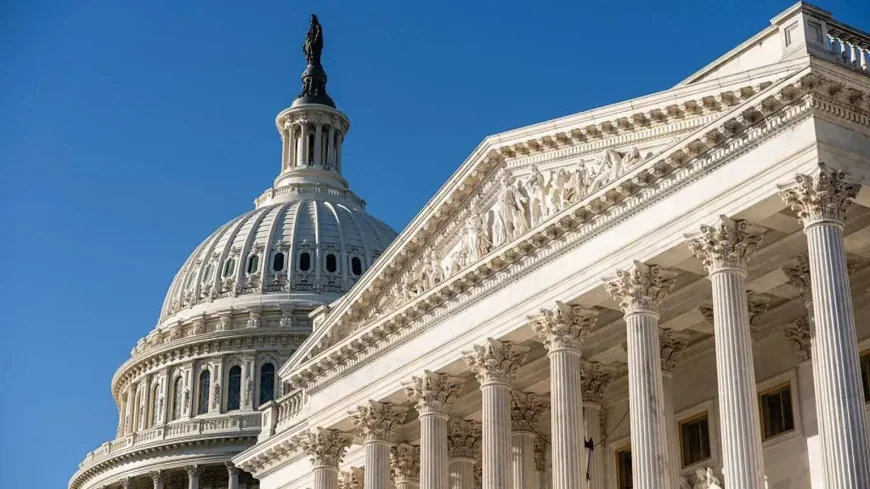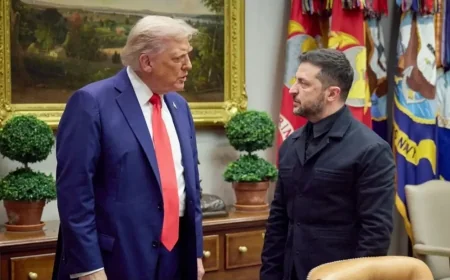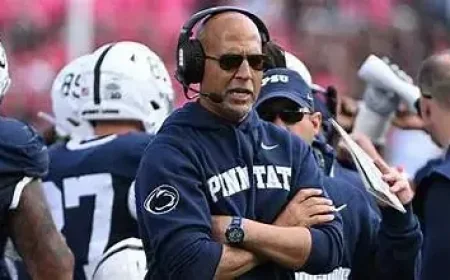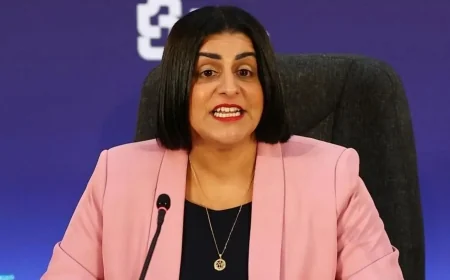A deal aimed at ending the US government shutdown has passed the Senate, raising hopes that the budget impasse between Republican and Democratic lawmakers in Congress could be resolved.
This ongoing shutdown is the longest in history. Until it officially ends, many – but not all – US government services will remain temporarily closed, and approximately 1.4 million federal employees are either on unpaid leave or working without pay.
While budget clashes are common in US politics, this one has been particularly tense because President Donald Trump began significantly shrinking the size of the national government as soon as he took office in January, and he has used the current impasse to threaten further cuts.
Why did the US government shut down?
Republicans and Democrats failed to agree on a funding bill for government services after October 1, when the previous federal budget expired.
In the US system, Congress must approve spending plans before they are sent to the president to become law.
Republicans currently control both houses of Congress. But in the Senate – or upper house – they do not have the 60 votes needed to pass spending bills, giving opposition Democrats some bargaining power.
Democrats wanted the bill to include an extension of expiring tax credits that would make health insurance more affordable for millions of Americans and reverse Trump's cuts to Medicaid, a government healthcare program used by millions of elderly, disabled, and low-income people. They also opposed cuts to spending at government health agencies.
An interim bill designed to avert the shutdown passed the House, or lower chamber, but failed to pass the Senate. And so on October 1, the US government shut down for the first time in nearly seven years. On November 5, the shutdown entered its 36th day, surpassing the 35-day shutdown that occurred during Trump's first presidential term in 2018/2019.
To end the shutdown, both parties in the Senate needed to find a compromise that Trump would sign, a process that took them weeks.
When will the US government shutdown end?
A deal aimed at ending the shutdown finally passed the Senate on November 9, paving the way for the end of the record-breaking impasse.
This followed weekend negotiations in Washington, after which some Democrats joined Republicans and voted in favor of the agreement. Republicans – who hold a 53-47 majority in the Senate – needed at least 60 votes to pass the bill.
This vote is only a procedural first step, meaning no date has been set for reopening the government.
The deal will have to clear several more hurdles – including a vote in the House of Representatives – before federal employees and services return. But it is being seen as the first serious sign of progress after 40 days of deadlock.
The deal includes an agreement to vote in December on extending healthcare subsidies that are set to expire this year – a key issue on which Democrats wanted concessions.
However, the compromise legislation will only fund most government operations until the end of January 2026 – at which point, Congress could find itself back where it was at the end of September when government funding ran out.
Which government services are shut down, and which are still running?
Not all aspects of the government shut down during a shutdown. Services deemed essential continue to operate as normal, but most employees do not receive a salary until the government reopens. Border protection and law enforcement staff, Immigration and Customs Enforcement (ICE) agents, and medical care workers in hospitals are expected to continue working as usual.
Social Security and Medicare checks are still being distributed, although benefit verification and card issuance may be disrupted.
Mail is still being delivered and post offices are open because the U.S. Postal Service does not rely on Congress for funding.
Members of Congress are still receiving their salaries, a rule that some politicians have criticized.
On the other hand, a shortage of air traffic controllers, who are expected to work without pay, has resulted in numerous flight cancellations and delays.
The Department of Transportation announced the cancellation of thousands of flights at 40 airports nationwide, citing controller fatigue. The reduction in air traffic is expected to reach up to 10% of all domestic flights and has already caused chaos and frustration for many travelers ahead of the busy Thanksgiving travel season.

 Like
0
Like
0
 Dislike
0
Dislike
0
 Love
0
Love
0
 Funny
0
Funny
0
 Angry
0
Angry
0
 Sad
0
Sad
0
 Wow
0
Wow
0












































